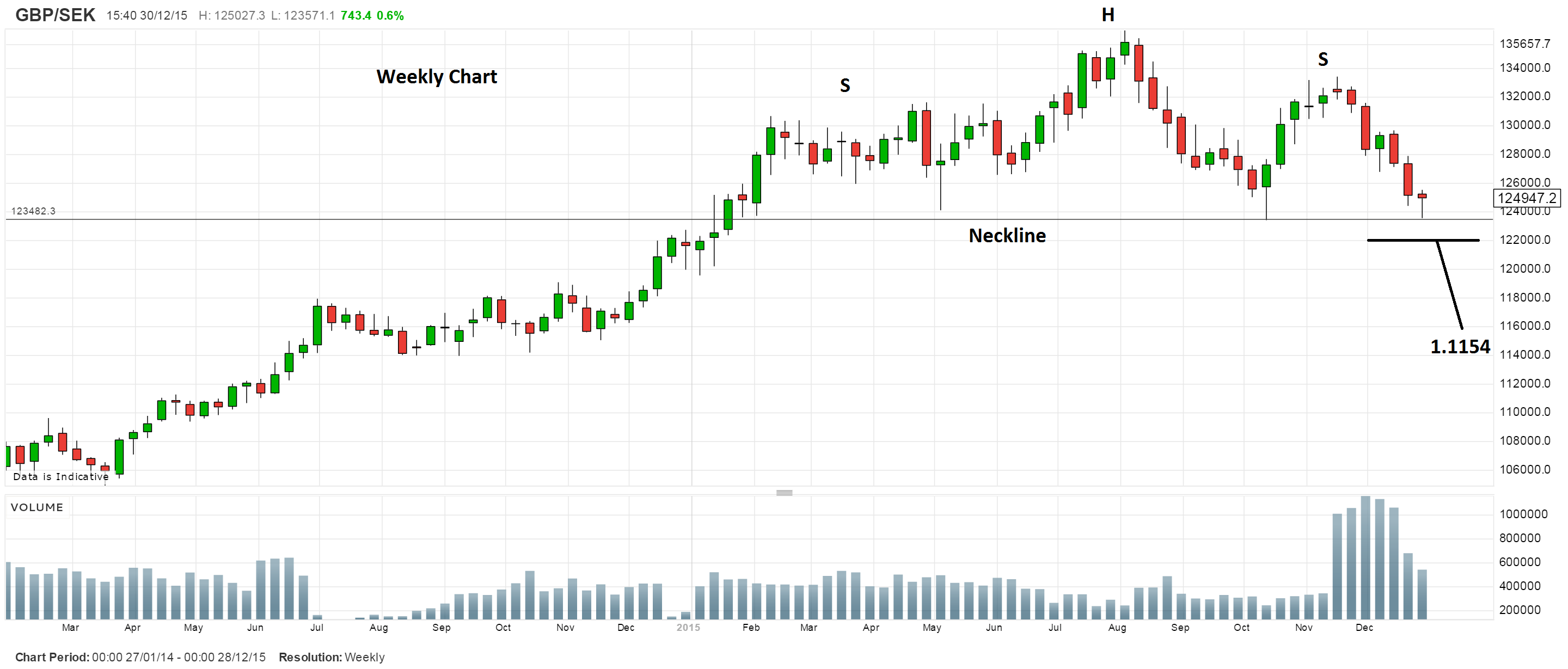GBP/SEK: SEK To See Past Trade Deficit ‘Blip’ and Be a Winner in 2016
The kronor’s underlying strength has seen it shrug off terrible trade data and it now seems set to becoming one of several analyst’s favourites in 2016.

The Swedish Trade Balance in November fell to -5.2bn from -1.7bn in October, undershooting - in hindsight quite optimistic - expectations, from Scandinaviska Enskilda Banken (SEB), of a 0.5bn trade surplus.
The data came after a particularly strong performance by the kronor in the run up to Christmas, on the back of a positive economic data, and an improved outlook for 2016.
Higher-than-expected growth in Q3 and an expectation-beating 5.2% rise in Retail Sales (yoy) in November had supported SEK; whilst forecasters had seen less chance of the Riksbank adopting further accommodative policies, further buttressing the currency.
The kronor’s underlying strength has seen it shrug off terrible trade data and it now seems set to becoming one of several analyst’s favourites in 2016.
Despite stalling on the day, however, the kronor soon recovered and now appears to be rising once again, having shrugged off the Trade Deficit as an inconsequential blip.
Indeed analysts still see the currency as one of the likely winners in 2016.
Société Génerale’s Juckes, for example, in a currency not on the final day of the year, remarked that although he saw the Canadian Dollar as a favourite for 2016:
“ I reckon it will be joined in the top half of the 2016 G10FX chase by the US dollar (again), the Swedish krona, the Japanese yen and the Norwegian krone.”
Bearish Price Pattern
From a technical POV the negative fundamental release came at an interesting, critical, juncture for GBP/SEK.
The price chart of the pair had shown the exchange rate reaching the neckline of a large, bearish, head-and-shoulders pattern, clearly visible on the weekly chart below, however, the negative release led to a bounce off the line:
If the krona strengthens much more, and breaks below the 12.34 lows - or below 12.20 for extra confirmation - that would open the ‘sluice gates’ to a slide down towards 11.54, which is the lower target, calculated from a 61.8% Fibonacci extension of the height of the H&S.
Kronor to prevail long-term
Whilst there has been a bounce since the poor data which has brought the exchange rate clear of the neckline, it has not been particularly convincing, and the chart continues to look bearish.
Indeed, SEB continue to see Kronor strength on the horizon,which it sees as possibly leading to a revision in the outlook for Riksbank policy, which may need to remain accommodative for longer in order to offset the negative impact on inflation from a stronger SEK:
“The risk for further krona strength suggests that early rate hikes from the Riksbank are less likely and it also means that the board will keep a dovish bias for near term policy well into next year.”
The National Institute for Economic and Social Research (NIESR), for example, argued recently in a report on Sweden, that GDP will be revised significantly higher due to the strong Q3 GDP reading and “fiscal policy expansion” as a result of rising levels of immigration.
NIESR, however, continued to see downwards pressure on inflation: “driven by low CPI readings during the autumn and falling energy prices.”

